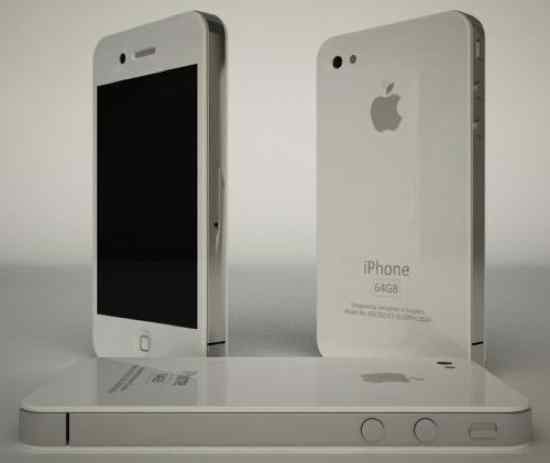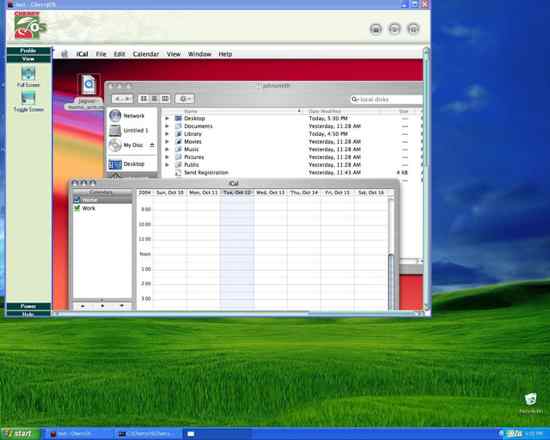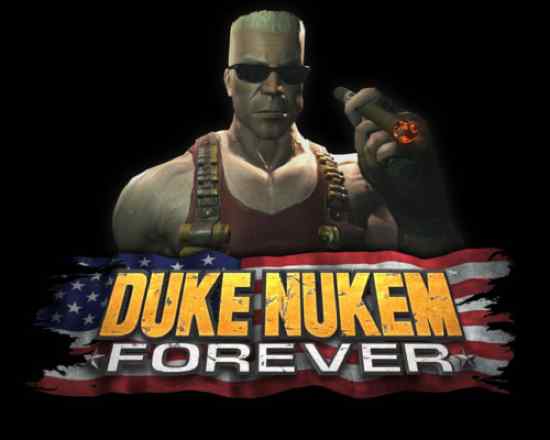 Technology
Technology  Technology
Technology  Humans
Humans 10 Everyday Human Behaviors That Are Actually Survival Instincts
 Animals
Animals 10 Animals That Humiliated and Harmed Historical Leaders
 History
History 10 Most Influential Protests in Modern History
 Creepy
Creepy 10 More Representations of Death from Myth, Legend, and Folktale
 Technology
Technology 10 Scientific Breakthroughs of 2025 That’ll Change Everything
 Our World
Our World 10 Ways Icelandic Culture Makes Other Countries Look Boring
 Misconceptions
Misconceptions 10 Common Misconceptions About the Victorian Era
 Mysteries
Mysteries 10 Strange Unexplained Mysteries of 2025
 Miscellaneous
Miscellaneous 10 of History’s Most Bell-Ringing Finishing Moves
 Technology
Technology Top 10 Everyday Tech Buzzwords That Hide a Darker Past
 Humans
Humans 10 Everyday Human Behaviors That Are Actually Survival Instincts
 Animals
Animals 10 Animals That Humiliated and Harmed Historical Leaders
Who's Behind Listverse?

Jamie Frater
Head Editor
Jamie founded Listverse due to an insatiable desire to share fascinating, obscure, and bizarre facts. He has been a guest speaker on numerous national radio and television stations and is a five time published author.
More About Us History
History 10 Most Influential Protests in Modern History
 Creepy
Creepy 10 More Representations of Death from Myth, Legend, and Folktale
 Technology
Technology 10 Scientific Breakthroughs of 2025 That’ll Change Everything
 Our World
Our World 10 Ways Icelandic Culture Makes Other Countries Look Boring
 Misconceptions
Misconceptions 10 Common Misconceptions About the Victorian Era
 Mysteries
Mysteries 10 Strange Unexplained Mysteries of 2025
 Miscellaneous
Miscellaneous 10 of History’s Most Bell-Ringing Finishing Moves
10 Cases of Vaporware
The Urban Dictionary defines ‘Vaporware’ as ‘anything (usually software, but can be anything) that is promoted and marketed without ever actually being produced’. The term is now being applied to many product categories, and may soon enter the formal English lexicon. Submitted for your approval are 10 infamous products whose launches were so delayed, many despaired they would ever see the light of day. Some made it out of development hell, while others keep us waiting. And waiting. And waiting.

Henry Ford was famously misquoted for saying “You can have any color (of Model T) you want, as long as it’s black.” Apple Computer can’t even claim a misquote. In June 2010, Apple snuck reporters into a room and demonstrated the iPhone 4 in both black and white. The black version debuted on time, but the white iPhone4 has never launched, despite Apple’s having made handheld electronic devices in white for over a decade.
Demand for the white iPhone 4 is probably overblown (it’s only been 250+ days as of this writing), but it does exist. Co-founder (and Apple Employee Number 1) Steve Wozniak wants one, and even he can’t get it. So Woz being Woz, he hacked a white iPhone 4 together from Chinese parts deemed defective by the supplier. Woz admits the device takes poor-quality photos when the camera’s flash is used, which is probably why Apple hasn’t released it yet. The gaff is so uncharacteristic of Apple that Steve Jobs recently joked that the iPad2 will ‘be shipping in White from Day One.’ No word on iPhone4, however.

All respect to Tom Scholz and his geologic eras between Boston albums, but ‘Guns N’ Roses’ “Chinese Democracy” was the stuff of myth and legend for the better part of a decade and a half. Guinness lists it as the most expensive album ever made. Geffen Records even offered (only remaining original member) Axl Rose a cool $1 million bonus just to finish it. And that was in 1999, FIVE YEARS after the band first entered the studio. Little did Geffen know those were just early days.
Recorded three separate times using every ‘Eruption-worthy’ guitarist in LA, ‘Chinese Democracy’ sessions began in 1994, but the CD wasn’t introduced, to exasperated fans and mediocre reviews, until 2008. Many attribute the delay to bizarre recording practices, needless perfectionism, Internet leaks and a project debt so vast it gained sentience before it was finally put down. The low placement here is only because the CD did see the light of day, and even went platinum. Of course, sales revenue never offset the recording costs ($13 million).
At least the first Watchmen film was meant to be seen. In 1986, Constantin Films obtained the rights to Marvel Comics’ Fantastic Four franchise, and promptly sat on it, while DC Comics made bank with ‘Batman’ and ‘Batman Returns’. After 12 years of inactivity, Constantin hurriedly commissioned Roger Corman’s production company to make an ‘ashcan’ movie, solely to retain the Fantastic Four film rights. The $2 million shoot took less than 30 days—and it shows.
That is, if you were allowed to see it. The film was never intended for theatrical release, but the studio still sent the oblivious cast and director on a promotional tour to hype the film. Marvel then purchased the film (and negatives) so 20th Century Fox could make a big budget version that hit theaters in 2005. You can find leaked versions of the original on YouTube, but seriously, don’t.

A truer product name is hard to imagine. In January 2003, Infinium Labs announced a gaming console running embedded Windows XP, so gamers could play PC games. Not enough? Phantom crowed that gamers could download any game they wanted over the Internet, and mused that one day they could give away the console in exchange for a two year subscription. Skepticism was instantaneous when no physical product emerged, and the bang to hype ratios reached 10:1. Bloggers had a field day.
Why no love? Well, after a year of delays, Infinium Phantom displayed a unit at the 2004 E3 trade show (followed by missed launch dates). Then they showed an updated version at the 2005 Consumer Electronics show (followed by missed launch dates). Eventually the SEC brought charges against the former Infinium CEO, and subsequent announcements revealed Infinium had lost $62.7 million in three years, with only $3.5 million going to actual development (a whopping 5% R&D budget). A few months later, Infinium axed the project, changed its name to Phantom Entertainment, and focused on the LapBoard— which launched in June 2008, two years past its originally planned release date.

The early 80’s was a seminal time in computing history. Office-software application development for the IBM PC and MS-DOS was just beginning. WordStar, WordPerfect, Microsoft Word, and Lotus 1-2-3 were just a few of the business-critical applications on a platform only three years old. This was all pre-Microsoft Office monopoly, if you can fathom such a time.
In 1983, startup Ovation Technologies announced a full-service application package that included word processing, spreadsheet, database management and communications software (basically, MS-Office as you would know it today). But by 1984, Ovation declared bankruptcy, having burned $7 million in VC funding without releasing the product. Actually, we can go further than that: Ovation never launched a single product of any kind.
If you were breathing during the dot-com bust, you might be familiar with the problem: Ovation spent more (some would say all) of its resources promoting and selling the product instead of actually, you know, making it. As a result, Ovation’s sole contribution to computing history is this: their nonexistent software is supposedly the reason why the term “vaporware” was coined.

In October 2004, Maui X-Stream announced CherryOS, a proprietary Mac emulator for Windows PCs that was blazingly fast and available as a mere $50 download. News spread like wildfire and melted the servers before anyone could get the program. But Maui X-Stream abruptly pulled the software without explanation, inviting howls of protest and allegations of fraud.
They promised CherryOS would be again be available for download in March 2005. Many geeks and techies called shenanigans, accusing CherryOS as a ripoff of PearPC, an open source Mac emulator. Since PearPC is open source, it was illegal for Maui X-Stream to sell it for a profit. Kristian Hermsen and Halvar Flake backed up the charges by finding 600 functions pulled from open-source products, and posted Cherry OS for free online, hoping to kill Maui X-Stream’s sales.
Maui X-Stream issued cease and desist letters, yet pulled CherryOS from the market voluntarily on April 5, 2005, posting “CherryOS is on Hold – Until Further Notice”. A day later, Maui X-Stream announced they had open sourced their code, and CherryOS would be available in May, at only $14.95 to cover development and marketing costs. The CherryOS website has since disappeared.

All this for a country that barely accepts tourists.
North Korea started construction on the mammoth Ryugyong Hotel, in 1987, to top South Korea’s Ssanyong, which built the world’s tallest hotel a year earlier (the Singapore Westin Stamford). The Ryugyong was scheduled to open in June 1989, for the North’s ‘13th World Festival of Youth and Students’, but that didn’t happen. And it kept not happening. Sure, the shell was built in a few years but, in 1992, construction on the 330m high, 3,000 room hotel stopped cold following the withdrawal of Soviet aid. The project stalled for the next 16 years.
Interestingly, after touting the hotel to the world and even issuing commemorative postage stamps, the North Koreans began digitally removing the building from the Pyongyang skyline photos, and even stopped listing it in city maps. That’s right, North Korea tried to make the hotel vaporware, but couldn’t—it was there for everyone to see.
The EU Chamber of Commerce inspected the never-used building in the late 90’s and deemed it ‘irreparable’, citing crooked elevator shafts and inferior concrete. Even so, construction resumed in 2008 when Egypt’s Orascom won a wireless network contract and used the hotel for an antenna site. Officially, Orascom denies that completing construction of the hotel is part of the contract, although they have made improvements to the facade.
The latest completion estimate provided by North Korean officials was in 2008. At that time, they said the hotel would be ready in 2012, coinciding with the 100th anniversary of Kim Il-Sung’s birth. Or the end of the world, if you believe the Mayans. Or the latest rumored release date of…

3D Realm’s Duke Nuke’em Forever is the definitive, full-on poster child of vaporware. It made Wired Magazine’s Annual Vaporware Awards so many times, they retired it from consideration.
The original “Duke Nuke’em 3D” debuted in 1996, and featured a brash marine, entertaining gameplay and adult oriented content (a novelty at the time). But things weren’t as rosy for the sequel, tentatively scheduled for no later than Q3 1998. 3D Realm’s developers complained the game engine was so outdated that further development using that tool was pointless. So the company licensed the Quake II gaming engine and essentially started over. But 3D Realms got the source code late, and bought time by teasing gameplay videos at industry trade shows. But, in 1998, Epic Games released their Unreal Engine, which was superior to the Quake II engine, and the developers again agreed to switch game engines, and again scrapped their previous work entirely.
By late 1999, deadlines were flying by and the game wasn’t even halfway completed. It also didn’t help that the owner kept adding new game elements, with no plan for what the final product would look like. By 2003, management was openly combative with the media, saying Duke Nuke’em Forever would ship ‘when it’s done’. Lather, rinse and repeat for several years.
By 2006, funding had dried up. 3D Realms had already spent $20 million on development and asked partner Take Two for an additional $6 million more to complete the game. Staff was laid off and Take Two sued 3D Realms for breach of contract. Behind the scenes, nine laid off employees continued developing the game from their homes. This rogue band of developers later formed an independent studio (Tryptych) which happened to office next to 3D Realms’ competitor Gearbox Software. 3D Realms was using contractors on Duke Nuke’em Forever at the time, but when they got wind of Tryptych’s progress , they approached Gearbox to help finish the PC and game console versions.
3D Realms officially re-announced Duke Nuke’em Forever at Penny Arcade Expo 2010, and actually let gamers play the apocryphal game for the first time. The line was four hours long. Gearbox Software has since announced that Duke Nuke’em Forever will be available to the public on May 3, 2011, fifteen years and at least $26 million later. Hold your breath at your own risk.

The defining vision of the future from the 50’s-on was jetpacks and flying cars. If you don’t know this, then all those Jetsons reruns and ‘Back to the Future’ movies have been in vain.
Jetpack research is basically dead, but military and NASA prototypes exist if you’re not picky about the mortality options package. But the dream of uncluttered roads and cars flying overhead still eludes us. The most recent attempt was Flight Innovations’ N2001C Sky Commuter car, a vertical take-off and landing (VTOL) plane. The details were never all that clear, and oddly enough, they shelved the project after spending – only – $6 million in R&D. At least there’s still the Falx Stalker or the Transition.

Humanity’s been awaiting the end of the world since darn near the beginning of the world, and, to date, all predictions have been vaporware. Some predictors have been very specific and very wrong (see ‘Top 10 Failed Apocalyptic Predictions’ here on Listverse), while others have milked ambiguity for fun and profit. That’s why I’m not worried about 2012 any more than 2011 or 2013. That’s my choice, but it’s still not a bad idea to live as if the end is near: our mortality is certainly not vaporware. We’re done when we’re done. Carpe Diem.








